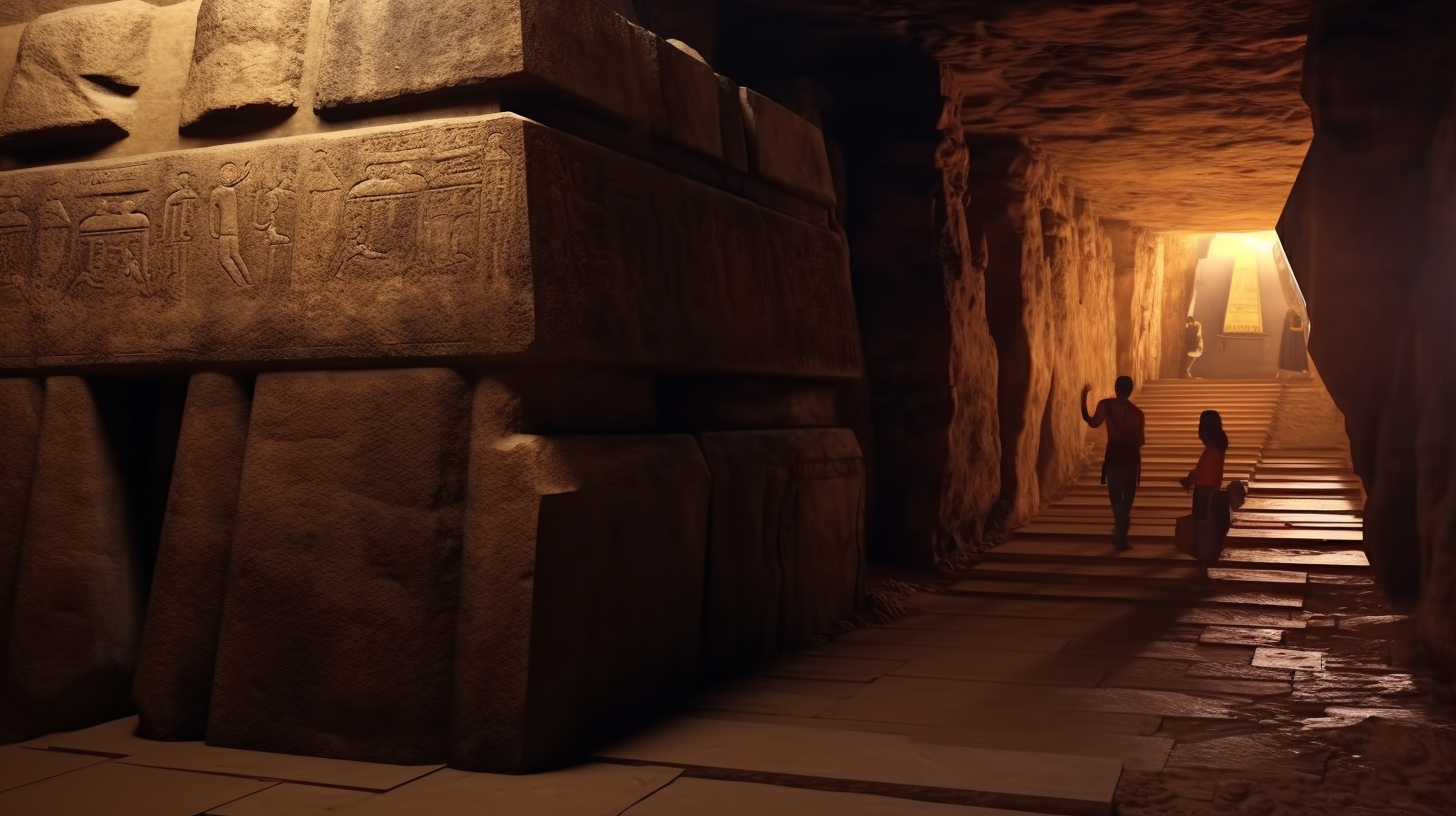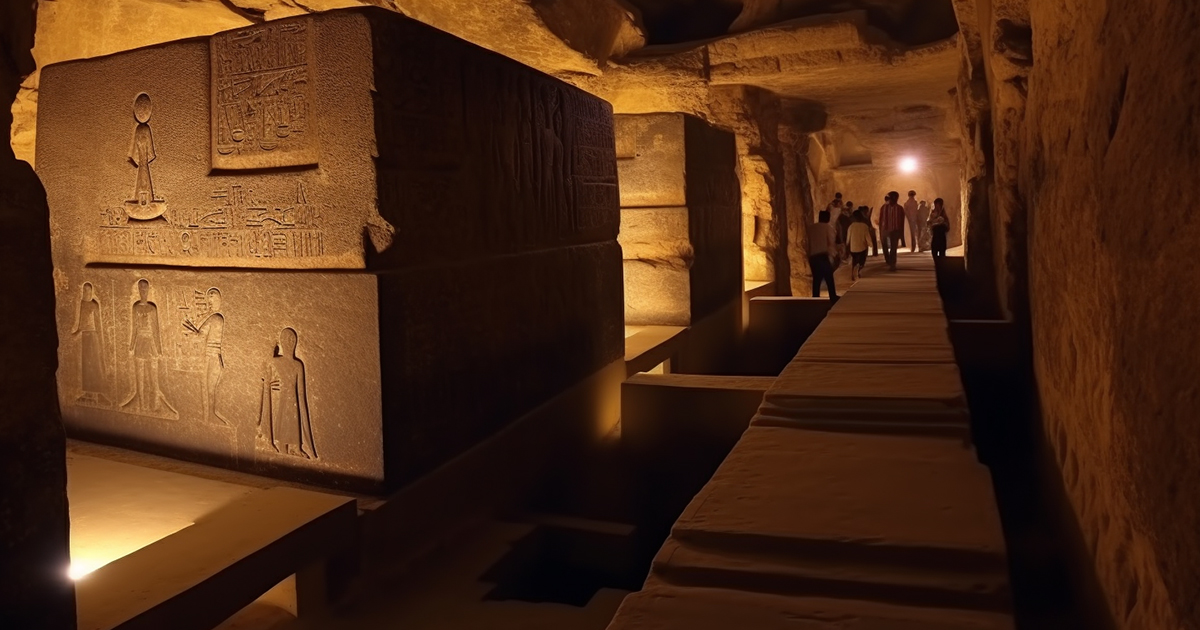Introduction
In the vast sands of Sakara, Egypt, an extraordinary discovery was made in 1850. Auguste Mariette, a French Egyptologist on an expedition to recover ancient manuscripts for the Louvre Museum in Paris, stumbled upon a peculiar sight. What appeared to be an entrance to an underground chamber lay hidden beneath the desert’s surface, concealed by large rocks. Mariette’s intrigue led him to clear away the sand and use explosives to reveal the entrance to a tomb complex known as the Serapium. Fast forward to April 2018, and ancient astronaut theorist Giorgio Tsoukalos, along with Egyptian egyptologist Rami Ramani, embarked on a journey to explore this enigmatic site.
The Serapium of Sakara: A Name Shrouded in Mystery
The Serapium, or Serapeum, draws its name from “Serapis,” a combination of the bull deity Apis and the god Osiris. Deep beneath the desert surface, it harbors a 790-foot long passageway adorned with alcoves carved meticulously into the limestone rock. These alcoves house 24 colossal stone sarcophagi, each measuring approximately 13 feet in length, 7.5 feet in width, and towering over 10 feet in height. Yet, the question that perplexes both experts and enthusiasts alike is how the ancient Egyptians managed to transport these massive granite boxes to this underground chamber.

The Serapium’s Purpose: A Puzzle That Endures
Despite extensive research and exploration, the intended purpose of these sarcophagi remains elusive. Conventional Egyptologists and archaeologists have long believed that these imposing structures were meant to house the remains of sacred Apis bulls. However, this theory is called into question by the fact that only one of the tombs contained animal remains, while all others were found empty. The mystery deepens, leading us to contemplate whether there is more to the Serapium than meets the eye.
The Apis Bull: A Connection to the Divine
It’s crucial to note that ancient Egyptians did not worship animals; instead, they considered them as messengers of the gods. The Apis bull represented Osiris, and its significance is intertwined with celestial connections. According to legend, the first Apis bull came into existence when a divine ray of light struck a cow, giving birth to this sacred creature. This celestial association is mirrored in the precise craftsmanship of the sarcophagi. Their sides and bottoms boast impeccable polishing, featuring perfect 90-degree angles. Crafting these massive structures from basalt, known for its difficulty to work with, only adds to the mystery surrounding their creation.
Hieroglyphic Inscriptions and Eternal Life
The inscriptions found on the Serapium’s sarcophagi offer essential insights into ancient Egyptian beliefs. The so-called false doors played a pivotal role in facilitating the passage of the spirit and soul from the mummy to the afterlife. These inscriptions were integral to ensuring the Apis bulls’ journey to eternity, where they could reunite with Osiris in the celestial realm.
The Golden Age of Egypt: A Time of Cosmic Encounters
Ancient historians, including Herodotus, Strabo, and Eusebius, have alluded to a bygone era of Egypt known as the Golden Age, dating back possibly as far as 10,500 BC. Some speculate that the Serapium’s mysteries might be remnants from this enigmatic period, a time when humans purportedly shared the Earth with gods. According to the ancient astronaut theory, these gods were not mere mythological figures but extraterrestrial visitors. Some even suggest that the figure of the Apis bull carved into one of the sarcophagi signifies a connection to the stars rather than merely serving as a vessel for mummified bulls.
Video:
Conclusion
The Serapium of Sakara continues to baffle experts and enthusiasts alike. Its colossal stone sarcophagi, precise craftsmanship, and inscriptions hint at a deeper cosmic connection. While the intended purpose of these structures remains uncertain, the enigma of the Serapium invites us to explore the ancient mysteries of Egypt, where the lines between myth and reality blur, and the possibility of extraterrestrial influence lingers in the shadows of history.

24 thoughts on “The Cryptic Egyptian Underground Chamber: A Closer Look”
Comments are closed.